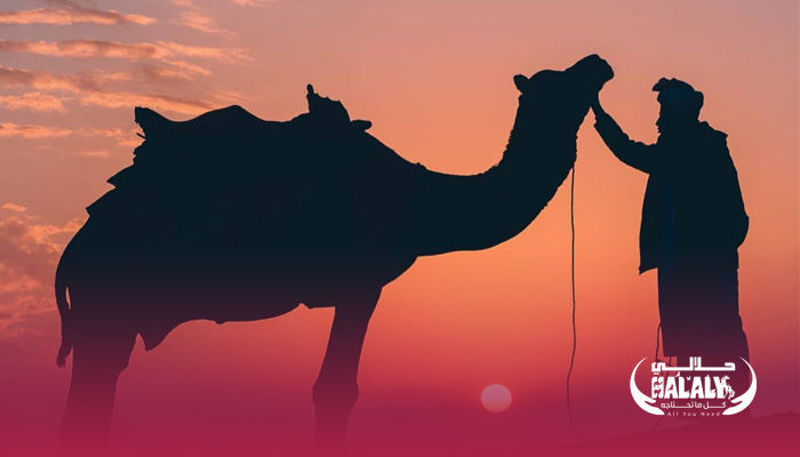Since the dawn of history, Camels have been the uncrowned kings and queens of the Arabian deserts. The camel, historically, was the mount Arabs used in their military campaigns and also the main herd animal and a major source of wealth and nourishment. Without the almighty camel, the story of the Arab world might have turned out quite differently.
How were Camels used?
It is documented that in pre-Islamic times, the Arabs had domesticated the camel, allowing them to explore and control trade networks across Arabia to the Mediterranean, with the help of the camel, the Arabs dominated vast expanses of the Middle East and North Africa. The camel allowed large Arab armies to quickly move across rugged terrain.
There are two types of camels: the “Arabian” camel, or more accurately the dromedary camel has one hump. The other, the Bactrian or Asian camel has two. Besides the transport of warriors across vast and difficult terrain during the early years of Islam, the camel was critical in the daily lives of Bedouins. Primarily it was a “beast of burden,” used as a pack animal to carry hundreds of kilos over many miles, and often going without water for several days. The camel provided many resources to its keepers: transport; meat and milk; skin for water buckets, sandals, and bags; sinew for making rope; wool for tent and rug-making; and dung for fueling campfires. It even provided some folk medicines.
How Camels are used today?
Camels today are still raised for food, namely meat, and milk, not so much as transport as we now have more convenient transportation means. They are also used in tourism and for racing. In some parts of the Arab world, people still have a traditional wedding ceremony, in which the bride often arrives at the groom’s house mounted on a camel, both fancily decorated to reflect the joy of the occasion. Not a great favor to the splendid camel is that it is often slaughtered for sacrifice on ceremonial occasions such as weddings!
Camels have a bad reputation:
Camels are incredibly well-adapted to the desert; no doubt, they are indeed the best munt there is if you fancy venturing the desert. But when it comes to how they interact with humans, Camels have a bad reputation. The camel is often described as bad-tempered, ornery, and dangerous; its bite is ferocious and sometimes infectious. It is believed to carry grudges towards someone who’s angered it. When a camel is annoyed, it can spit his foul-smelling stomach content at whatever or whoever is annoying him. Some of their bad reputations comes from the fact that they make grumpy-grunting noises when they get up. Camels in reality, like any other animal, if treated well are good-tempered.
Camels Races, our very own exciting sport:
Today, in the Gulf Countries, camels are bred specifically to race competitively; often costing a few-several million dollars. Camels race in winter and are selected from a breed of non-milk-producing types. Often children were used as jockeys, a practice that has now been outlawed and jockeys now are robots.
We, in the Arab world, are indebted to camels. For better or worse, developments in most of Africa and Asia couldn’t have been possible without the camel. How it’s fared in present times is not so glorious. Nevertheless, the camel continues to support desert populations and forever be dear to our hearts.























































